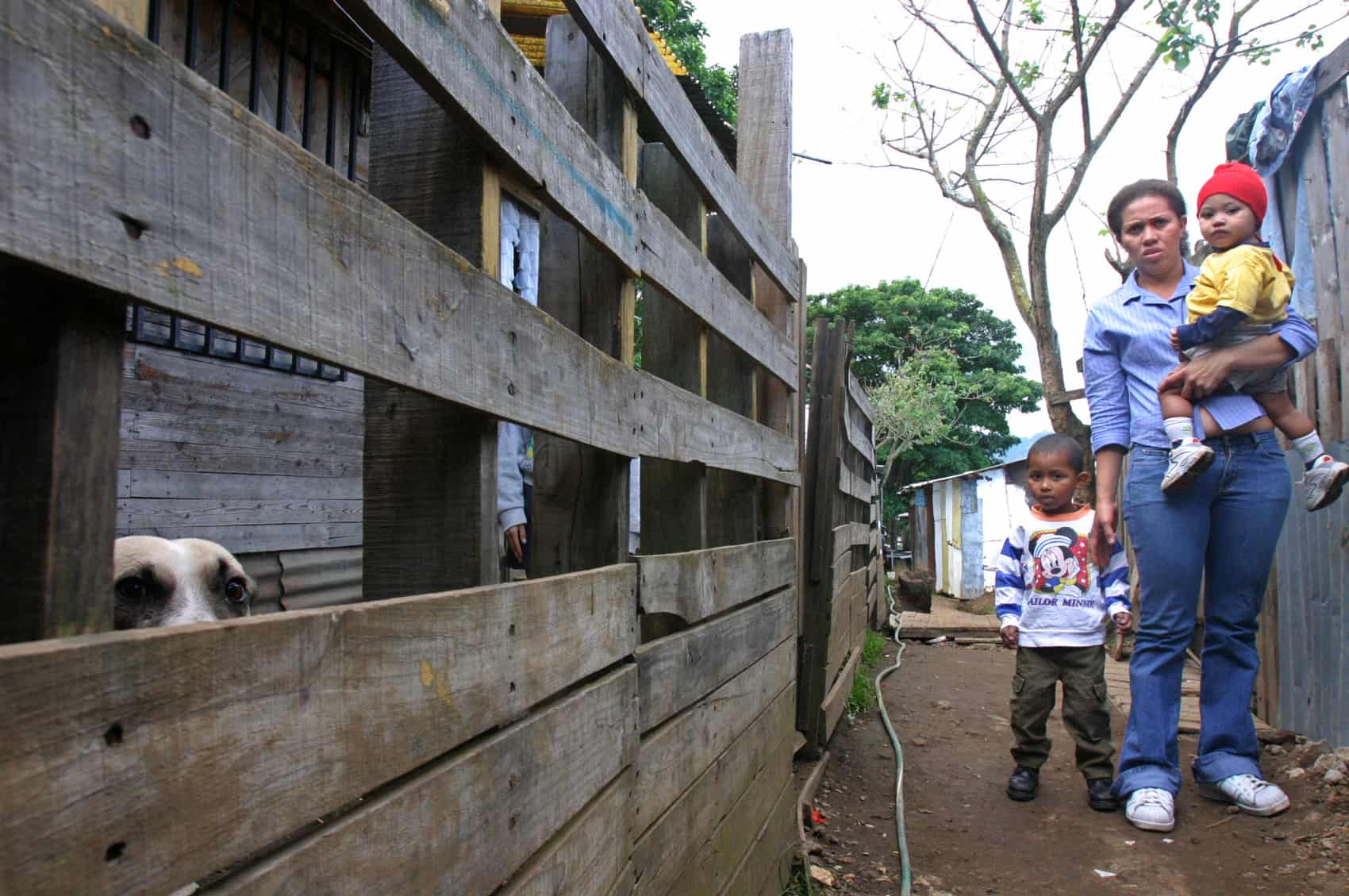Poverty and extreme poverty have climbed to four-year highs in Costa Rica, according to the National Statistics and Census Institute (INEC).
On Thursday, INEC released the results of the 2014 National Household Survey, revealing that 318,810 households live in poverty, up 32,727 from the same period in 2013. The 1.7 percent increase in the poverty rate was accompanied by a 6.7 percent increase in the number of families living in extreme poverty, which totaled 94,810. In 2010, 21.2 percent of Ticos were poor, according to INEC.
The survey showed a significant gap between rates of poverty in urban and rural areas. More than 19 percent of homes in urban areas fell below the poverty line compared to 30.3 percent in rural areas. Costa Rica’s cities saw an extreme poverty rate of 5.2 percent compared to 10.6 percent in the countryside. Rural poverty also grew at a faster rate than in urban centers.
The Central region, which includes San José, had the lowest poverty rate at 17.2 percent. The Brunca region in Costa Rica’s southwest had the most poor households at 36.2 percent. The Chorotega region, which encompasses much of the Guanacaste province, showed the highest levels of extreme poverty, reaching 12.1 percent.
The average monthly household income in 2014 dropped 0.4 percent to ₡1,008,482, or just over $1,800. But a more accurate figure would subtract 4.6 percent from that due to lost purchasing power caused by inflation.
INEC suggested that unemployment was the greatest marker of poverty, noting that there were four times as many unemployed poor Costa Ricans as unemployed not-poor Tico: 23.9 percent compared to 5.7 percent. A large majority of the poor who do work — 72.3 percent — are employed in the informal sector.
While household income fell, so did Costa Rica’s estimated GINI score, which measures income inequality. The estimated GINI score for 2014 is 0.516 compared to 0.522 in 2013, suggesting that the concentration of wealth slightly decreased to levels closer to those in 2011 and 2012.
In August, President Luis Guillermo Solís announced a new partnership with Oxford University in the United Kingdom that he hoped would improve Costa Rica’s stagnant poverty rate. Costa Rica will begin using the multi-dimensional poverty index (MPI), developed by the English university, in the hope of more effectively leveraging the country’s social assistance programs to tackle extreme poverty.
https://infogr.am/costa-rican-poverty-by-region






